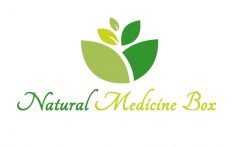
The foundation layers include the three plant-based food groups:
- vegetables and legumes
- fruits
- grains
These layers make up the largest portion of the Pyramid because plant foods should make up the largest portion of our diet – around 70% of what we eat!
Plant foods contain a wide variety of nutrients like vitamins, minerals and antioxidants. They are also the main source of carbohydrates and fibre in our diet.
Older children, teens and adults should aim to have at least 2 serves offruit and 5 serves of vegetables or legumes each day.
From the grains group, choose mostly whole grains (such as brown rice, oats and quinoa), and wholemeal/wholegrain varieties of bread, pasta, crisp breads and cereal foods (over highly processed, refined varieties).
The middle layer includes the milk, yoghurt, cheese & alternatives and the lean meat, poultry, fish, eggs, nuts, seeds, legumes food groups.
Foods in the milk, yoghurt, cheese & alternatives group primarily provide us with calcium and protein, plus other vitamins and minerals. This food group also refers to non-dairy options such as soy, rice or cereal milks which have at least 100mg per 100ml of added calcium. Choose reduced fat options of these foods to limit excess kilojoules from saturated fat.
Foods in the lean meat, poultry, fish, eggs, nuts, seeds, legumes section are our main sources of protein. But each food also provides a unique mix of nutrients, including iodine, iron, zinc, B12 vitamins and healthy fats. We should aim to have a variety of meat and non-meat options from this food group.
The top layer refers to healthy fats because we need small amounts every day to support heart health and brain function. We should choose foods that contain healthy fats instead of foods that contain saturated fats and trans fats.
Choose unrefined polyunsaturated and monounsaturated fats from plant sources, such as extra virgin olive oil, nut and seed oils. Limit the amount of saturated fat you consume and avoid trans fats.
We also get healthy fats from foods in the other food groups, such as avocados, nuts, seeds and fish, so we only need a little bit extra from oils and spreads each day
I am sure you will find the food pyramid useful. Print it out and keep it handy.
Source: NutritionAustralia.org

